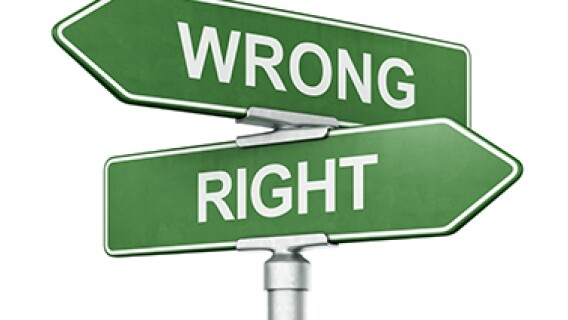Did you all see the images of a particular presidential candidate’s “No Malarkey!” tour bus? If you were asking yourself, “What the heck is ‘malarkey’?”, you were not alone. Unless you’re over age 60 or you majored in American literature in college, there’s no particular reason that you would have ever heard or read that word.
Fortunately, I majored in American literature in college! Please allow me to explain: “Malarkey” was the polite way that people used to say “bullsh*t”. Don’t you find it ironic that a politician, of all people, is putting the word “no” in front of the word “malarkey”? (I’m allowed to say that, because I’ve worked in politics. It’s sort of like how I’m allowed to tell Polish jokes, because my grandfather’s family is named Wisotzkey.)
[text_ad]
Well, I’ve also worked in the stock market and the media … after all, I write about the stock market for a living. I’m extremely familiar with the malarkey that people hear and believe about the stock market. And I’m sick of it all. So today’s rant is about truth vs. malarkey, and how to tell the difference between stock market facts and stock market fiction. Here are some random, popular media topics that are consistently wrong:
3 Misleading Financial Headlines
Share Buybacks Benefit Greedy Corporate Executives
…or the ever popular Share Buybacks Are a Desperate Attempt to Prop up a Stock and/or the Stock Market
What is a share buyback? First off, it’s more officially called “a repurchase.” It means that a company buys its stock in the stock market, just like you or I do. Why would a company do that?
A company buys its stock when they think the stock is incredibly cheap vs. the value they perceive it to hold. It’s pretty much the same as you snapping up a Michael Kors dress for $37.46 at Macy’s Last Act. The dress fits, it looks great on you, and it’s 70% off the suggested retail price. It’s a bargain! Well, shares of stock can also trade at incredibly cheap prices. And who is in a better position to know that than the people who run the company?
When a company repurchases their stock, it increases their earnings per share (EPS), and EPS is the bottom-line measurement of corporate profit growth. Importantly, earnings per share are calculated by dividing net income by number of outstanding shares of stock. There are only two numbers in that equation, so if you shrink the number of outstanding shares, the resulting EPS number will rise. Translation: profit growth gets a boost.
Investors notice profit growth. It causes them to buy the stock, which drives the price up. Therefore, share repurchases can be very beneficial to investors of all shapes and sizes. It’s not a greedy top 1% thing. Even the person who owns 10 shares of stock benefits when the share price rises.
The rule of thumb for fundamental stock analysts is that if the EPS number is rising each year, then that stock becomes a potential portfolio holding – presuming, of course, that other balance sheet numbers are also adequate. Stagnant or annually-falling EPS can quickly rule out a stock as a potential investment for many portfolio managers.
Sounds sort of prudent, right? Here’s another benefit for a company to repurchase shares. We’ll use Apple Inc. (AAPL) as an example. Apple repurchased 351.2 million shares of stock in fiscal 2019 (September year end). Since the dividend on a share of AAPL stock is $3.08 per year, that means Apple will no longer be obligated to pay out $1.08 billion dollars per year in dividends that were otherwise allocated to 351.2 million shares. They can probably think up a better use of that money, such as research and development of new products, offsetting tariffs on products sourced in China, or building several in-house childcare centers.
As long as we’re talking about dividends, here’s another common, annoying headline:
Can XYZ Company Continue Paying Their Dividend?
That headline is meant to scare each person who owns shares in XYZ Company, or is considering buying XYZ stock. Here’s a very quick way to know the answer to that question … which you ironically will not find explained in that type of article. Are you ready? I promise, this is not rocket science. Here goes: If a company is repurchasing their stock, then the dividend is safe.
Think about it: a company repurchases stock when they have so much money laying about that they can’t think of anything better to do with it. So they repurchase stock for the aforementioned reasons. Well, if they’ve got all the cash on hand, and they’re also paying a dividend to shareholders, they’re not exactly in financial trouble are they? Later on, if that company’s financial situation begins to turn a bit bleak, they’re not going to slash their dividend payout. That would make news headlines, scare investors, and cause people to sell their shares, pushing the share price down. Instead, that same company would simply cut back on the amount of stock that they repurchase in the coming months or year. Hardly anybody notices that, and it’s certainly not going to make news headlines.
Therefore, if a company is repurchasing their stock – which they discuss in every quarterly earnings press release – they can also afford to keep paying their dividend. That’s a stock market fact.
The Yield Curve! The Yield Curve! Oh No, There’s A Recession Coming!
I can’t even read this headline without shaking my head and grimacing and cursing. Seriously!
I must have written about this topic a dozen times in the last two years. Here’s the bottom line: The bond market does not cause economic recessions. The bond market reacts to economic recessions. It also reacts to changes in inflation, changes in Federal Reserve policy, changes in the value of the U.S. dollar, and changes in Aunt Polly’s Christmas dinner menu.
It is a ridiculous idea to stare at the bond market and guess whether a recession is coming, when there are a few basic, readily-available economic statistics that clearly tell investors how the economy is doing. You can review gross domestic product (GDP) numbers. This statistic is reported quarterly, with ongoing revisions, so it’s really easy for you to stay on top of the trend and not let a recession catch you by surprise. Basically, if GDP numbers are positive, then the economy is growing, or even thriving. If GDP numbers are negative, than the economy is shrinking, and that represents an economic recession.
The whole time that investors were bombarded with warnings about an oncoming recession, during 2018 and 2019, I was telling my readers the opposite … over and over and over again. I’m smart, sure, but I don’t have a crystal ball. I simply reviewed GDP numbers, and other economic indicators, and I knew that the economy was doing quite well. Additionally, 31 years of stock and bond market experience clued me in to the various nuances of the bond market yield curve, so I already knew that the yield curve does not cause a recession, and does not cancel out GDP growth.
Where to Find Actual Stock Market Facts...
I could go on and on about stock market fallacies. It’s not uncommon for me to rant about tariffs, efficient market theory, and other popular topics in my weekly reports in Cabot Undervalued Stocks Advisor. Subscribe today to learn more about stock market facts, malarkey and value opportunities in the stock market.
To learn more, click here.
[author_ad]

